A sustainable, high-performance building that in turn breeds excellence in education.
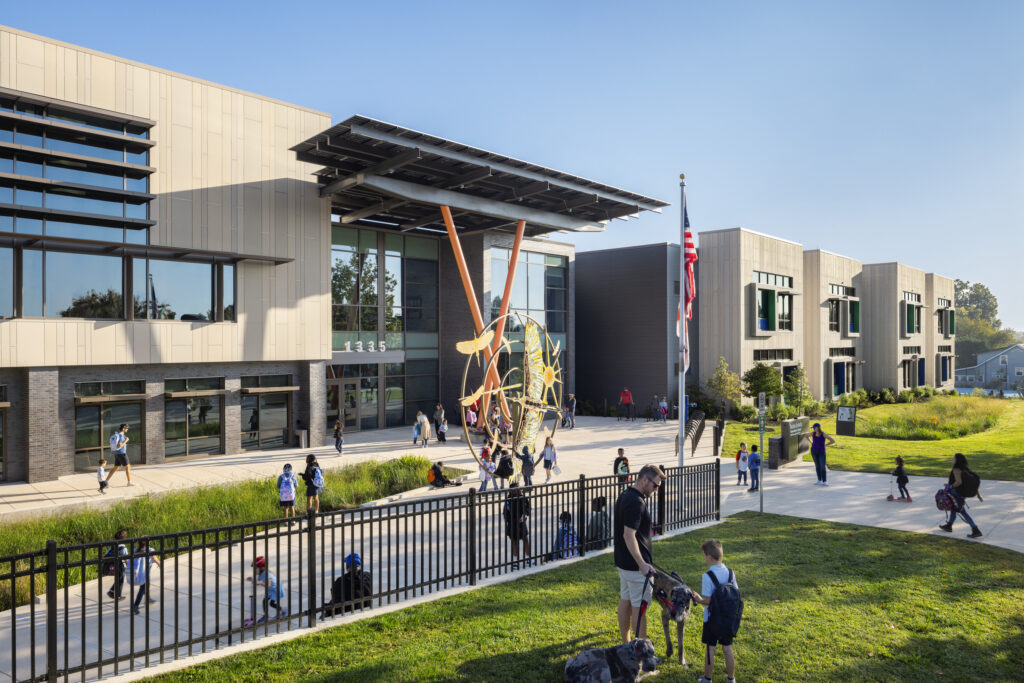
John Lewis Elementary School was designed to be the first school in the District of Columbia to achieve Net Zero Energy (NZE). The project is also the only school in the world to hold Platinum certifications in both LEED for Schools and WELL, setting a new benchmark. Through these approaches, the environment is designed to improve student and teacher performance, health, and well-being as well as reduce the building’s life-cycle costs.
The project’s design principles focus on civic presence, community connectivity, and—most importantly—student experience and wellness to create a high-performance, 21st-century learning environment.
The new building replaces an obsolete, brutalist, open-plan building, but it intentionally retained its best aspects—flexible space and ease of communication—while providing better adjacencies, daylighting, acoustics, security, and outdoor space to boost wellness and building performance, with the ultimate goal being improved educational outcomes.

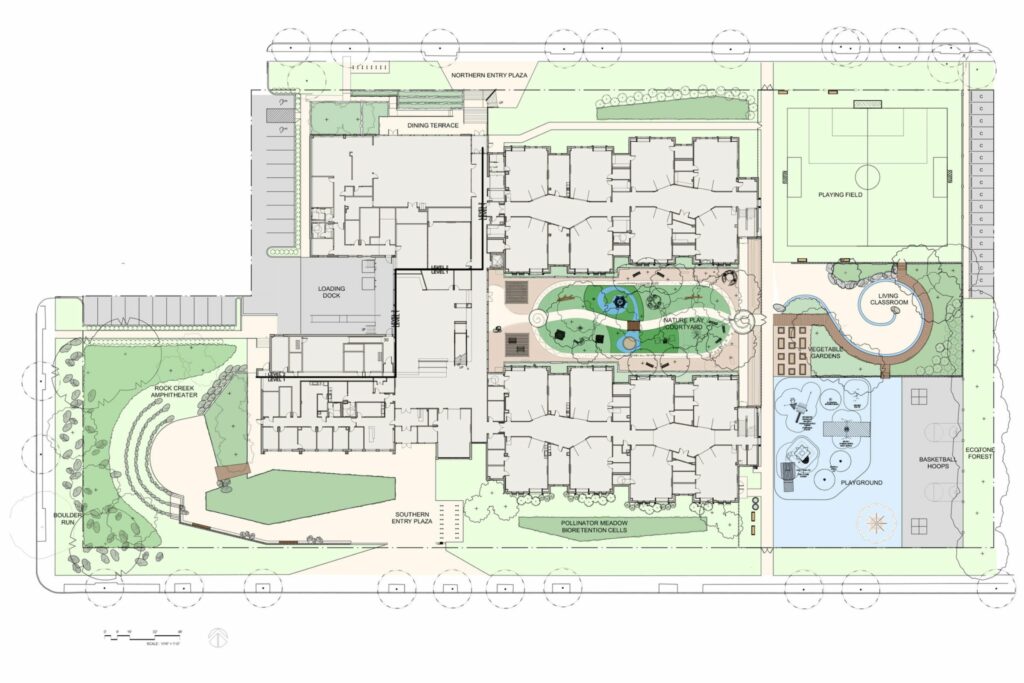
The design emphasizes outdoor recreation and connections with the natural world, known to improve student health and academic achievement. The landscape design embeds natural systems with dynamic play and learning spaces to blur the walls of the classroom. A treasured place for the community, certain school amenities are accessible after-hours and on weekends.
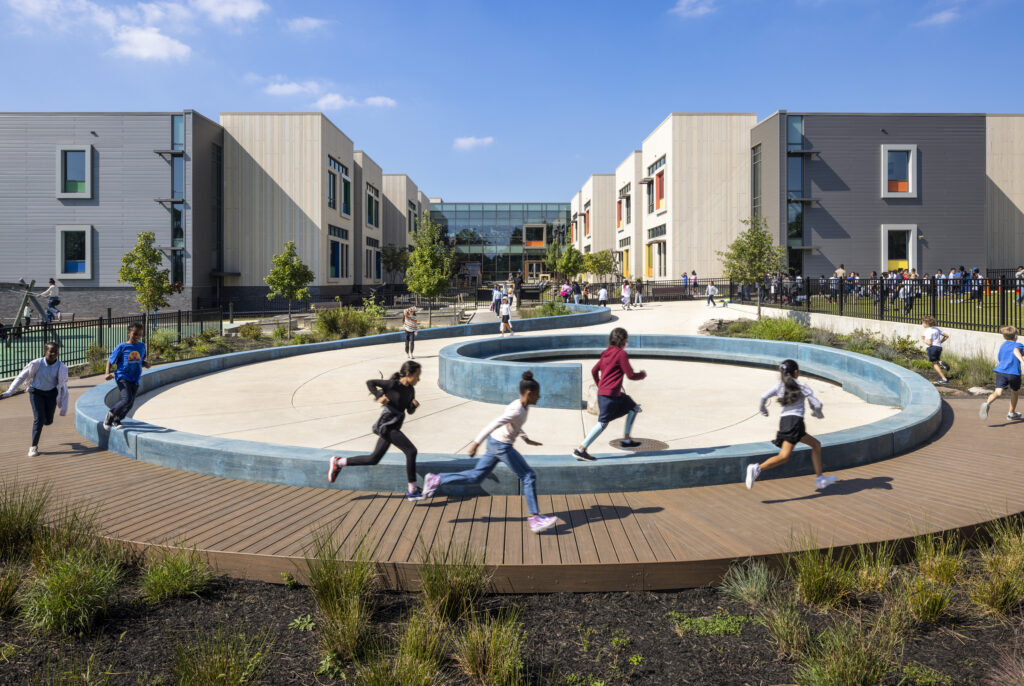
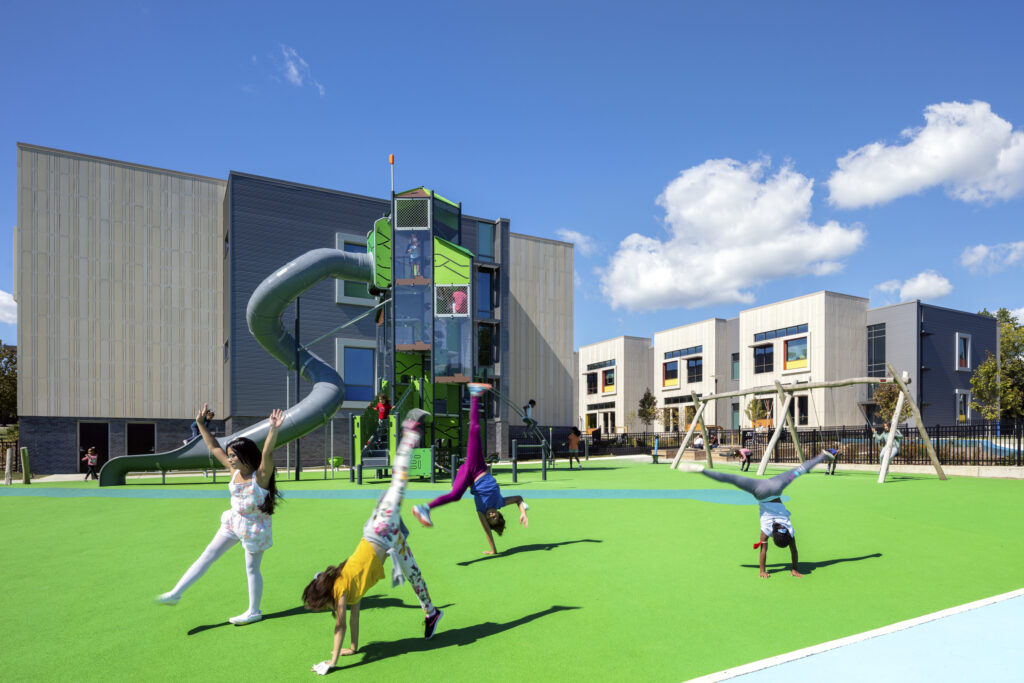
The building reads inside and out as a series of intimate, child-scaled houses that foster collaboration and strong relationships inside and feel at home in the adjacent residential neighborhood.

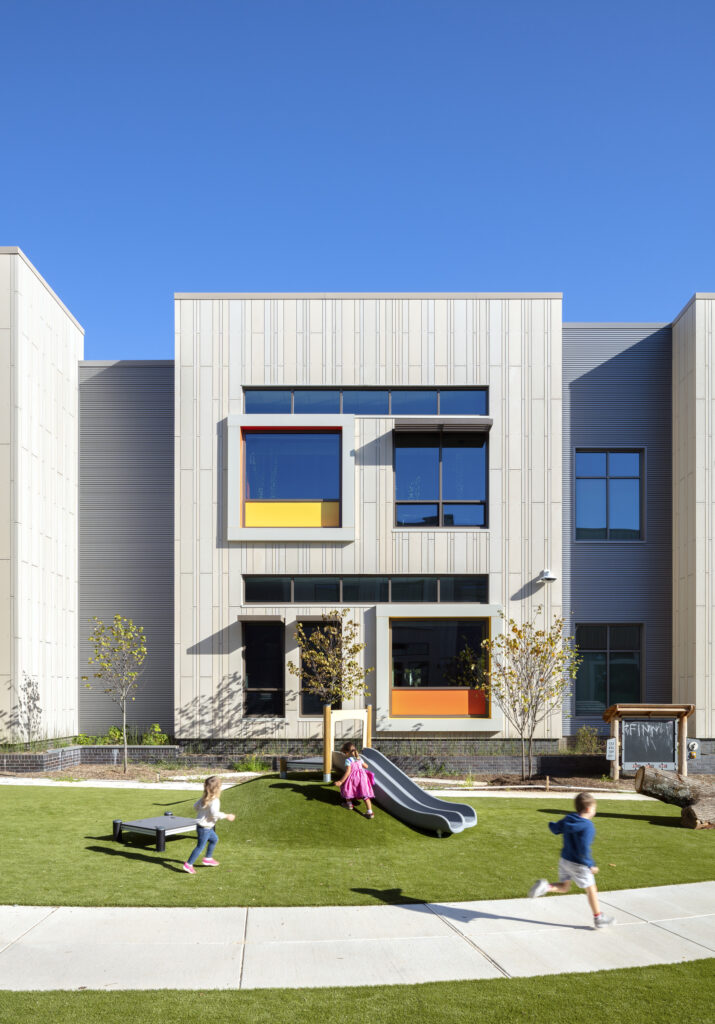
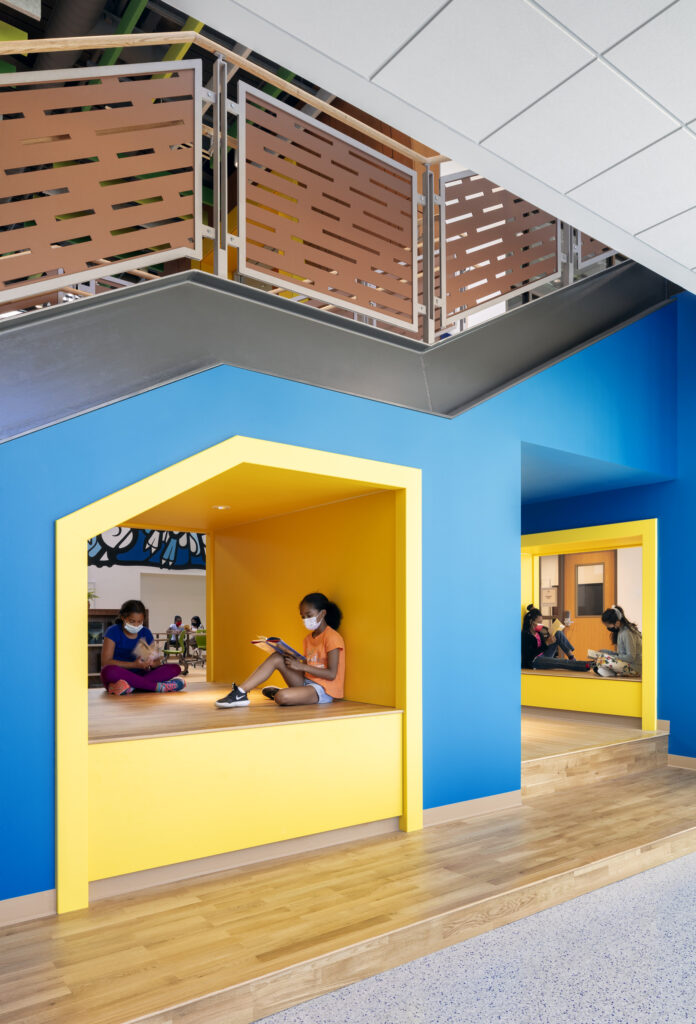
The school’s “civic presence” features a large photovoltaic array to inspire the entire community to embrace sustainable design.

The school honors its proximity to Rock Creek Park, DC’s largest and most famous park, through interior and exterior textures, materials, and environmental quality. This inspiration is prominently displayed in the library, where discovery zones and reading nooks encourage learning, socialization, and engagement for all students, and a large-scale mural by a beloved local artist is the backdrop to a “treehouse” maker space.

The cafeteria achieves a similar “treehouse” effect with green baffles in the ceiling and a wall of windows looking out to the leafy neighborhood.

A high-performance dashboard tracks the building’s energy consumption, showcases the building’s sustainability features, and links to the school’s curriculum to address topics such as social and environmental justice, climate change, and water conservation. Through this interactive, online dashboard, students and teachers can continuously discover how they interact with the building, and how the building and campus in turn influence and are influenced by the larger environment.

Pre- and post-occupancy evaluations of the school will complement the students’ ongoing exploration of performance. At its one-year anniversary of the school’s 2021 opening, our interviews for the post-occupancy evaluation will engage students, faculty, and administrators, as well as use on-site measurements to assess the success of the design.
The building is paired with Benjamin Banneker Academic High School, concurrently designed, which is also targeting NZE. The excess energy expected to be generated at John Lewis will help Banneker also achieve NZE. This multi-site approach broadens the perspective from a single building to the District’s entire inventory, encouraging an approach to radical citywide energy conservation.
| Client | DC Department of General Services |
| Size | 90,000 sf |
| Services | Architecture, Interior Design, Programming |
| Sustainability | LEED Platinum, Net-Zero Ready, WELL Platinum |
| Project Partner | Perkins Eastman | Associate Architect |
News Coverage
Book Feature: “Creating the Regenerative School,” 2024, Oro Editions
“Schools in Virginia and Washington, D.C., blaze a trail for net zero energy,” USGBC+, Fall 2023
“Two new DC public schools model net zero education,” Optimist Daily, Jan. 3, 2023
“This Hyper-Sustainable Elementary School Is the First of its Kind,” Metropolis magazine, July 2022
“Cause for Optimism Amid the Chaos,” Collaborative of High Performance Schools, June 2022
Awards
2023 American Architecture Award, The Chicago Athenaeum
2023 Education-K-12 Winner: Planet Positive Awards, Metropolis magazine
2023 Popular Choice Award for Primary and High Schools, Architizer A+ Awards
2023 Winner: K-12 Education, IIDA MidAtlantic Premiere Design Awards
2023 AIANY Merit Award in Architecture
2022 Best of Year Award for Early Education, Interior Design magazine
2022 Sustainable & Resilient Design Award + Honorable Mention for Excellence in Design, AIA Baltimore
2022 Shortlist: Completed Buildings-Schools and Special Prize-Use of Color, World Architecture Festival
2022 Finalist – Spaces and Places in Innovation by Design Awards, Fast Company magazine
2022 Award of Excellence, AIA Northern Virginia Design Awards
2022 Award of Merit: K-12 Education, ENR Mid-Atlantic Regional Best Projects
2022 Silver Citation-Common Areas: The American School & University Educational Interiors Showcase Awards
2022 Award of Merit, AIA Education Facility Design Awards
2022 Award in Architecture, AIA|DC Chapter Design Awards
2022 Citation of Excellence, Learning by Design, Education Facilities Design Awards